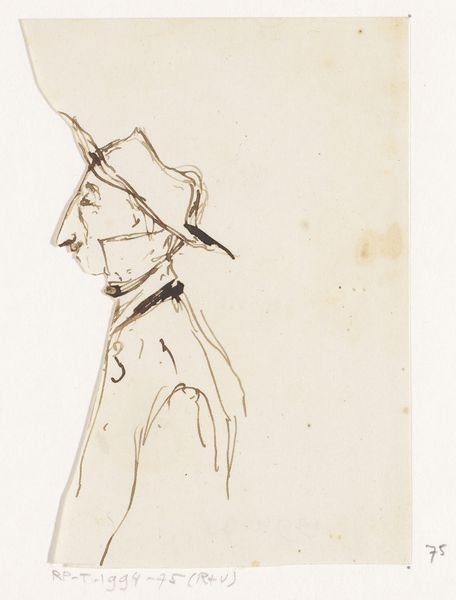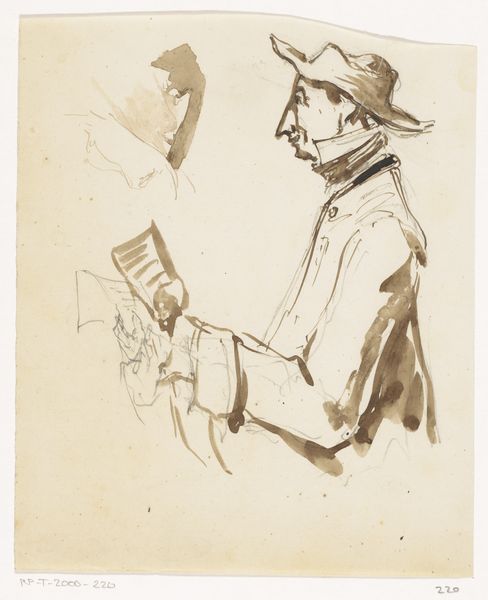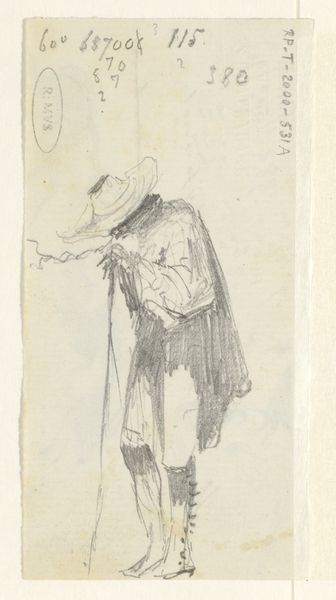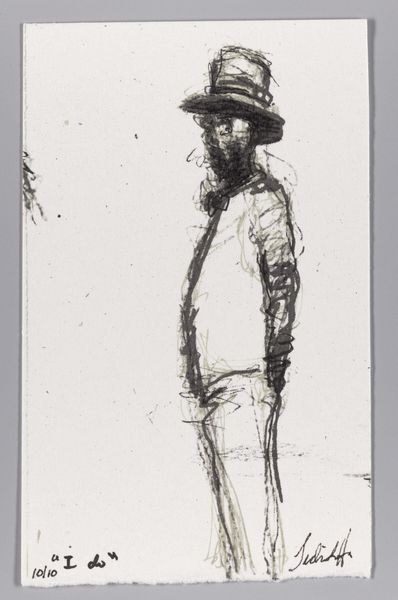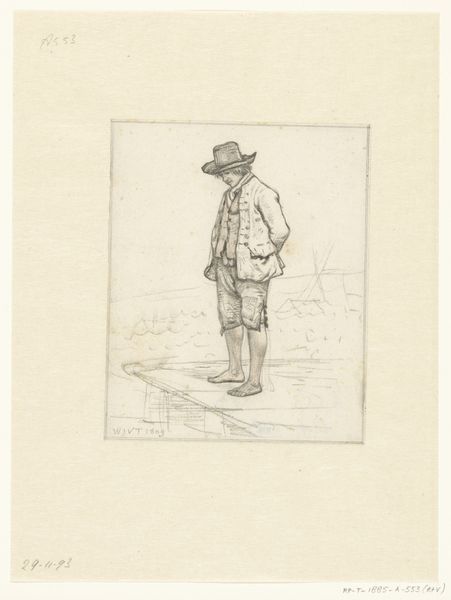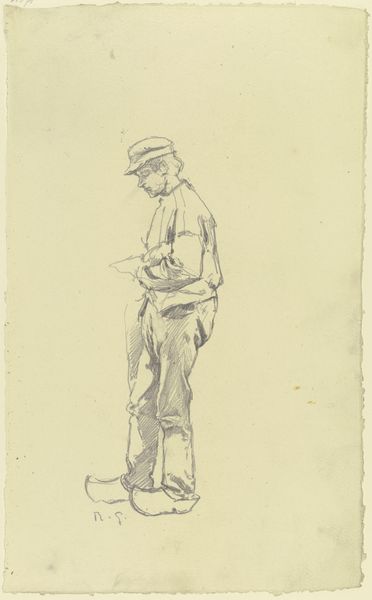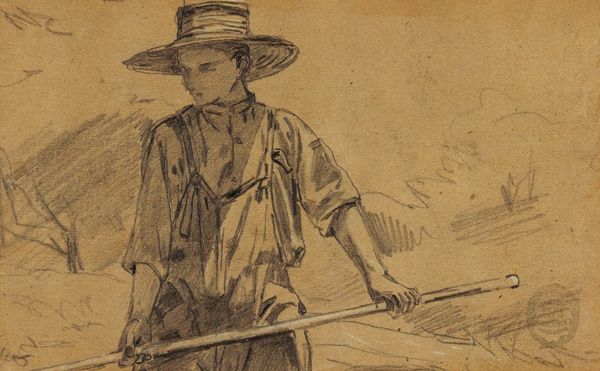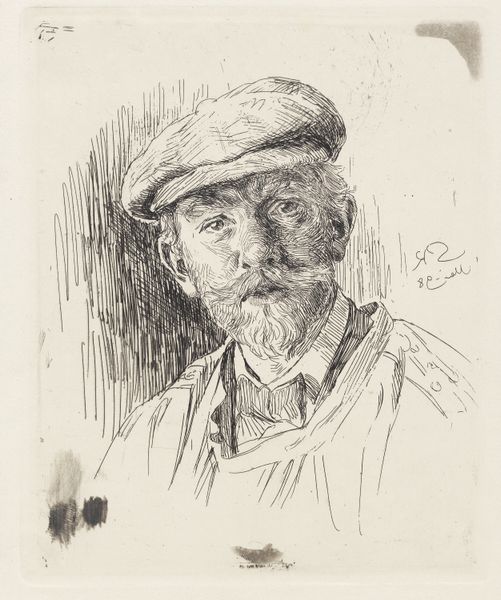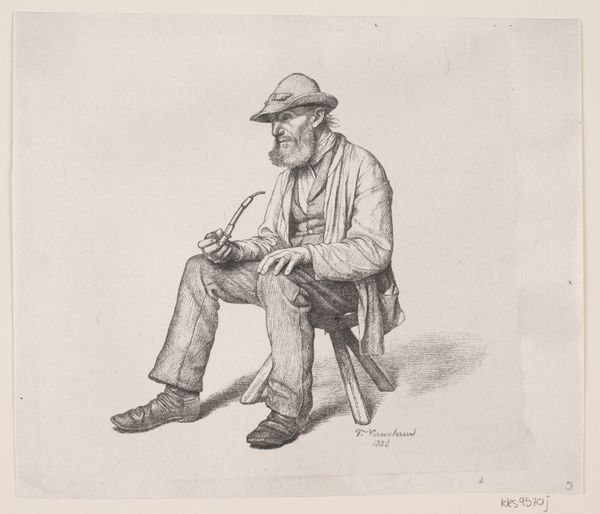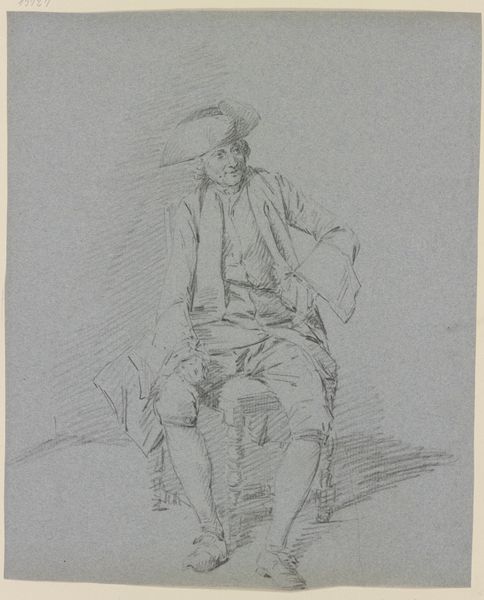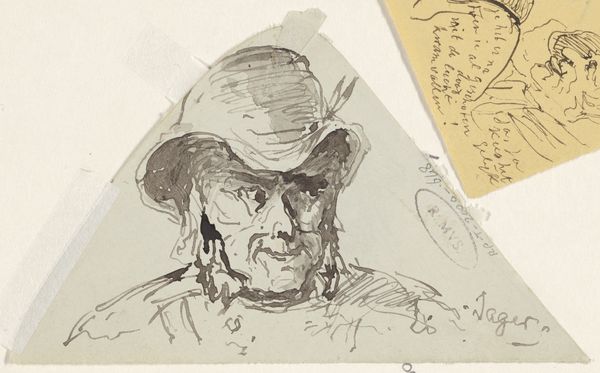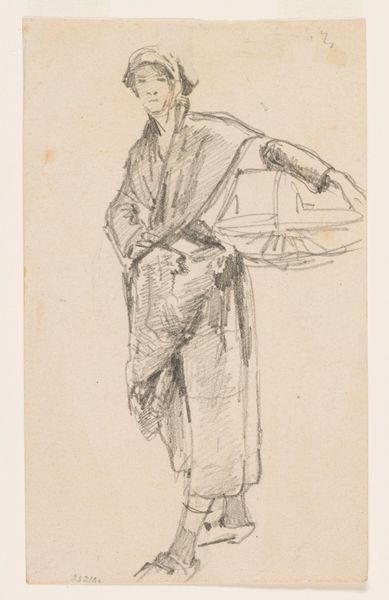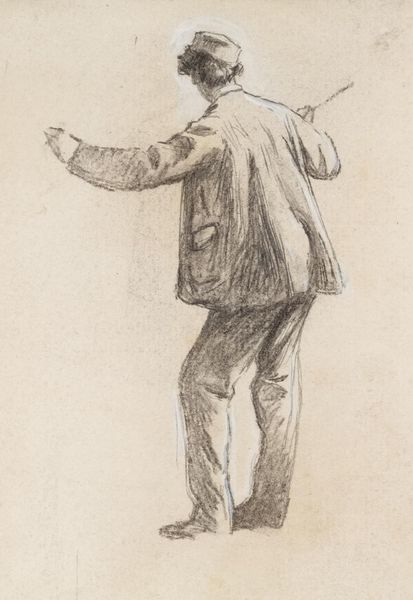
Studie van een man met een hoed op en een jas over zijn schouder 1841 - 1857
0:00
0:00
drawing, pencil
#
portrait
#
pencil drawn
#
drawing
#
pencil sketch
#
pencil drawing
#
pencil
#
portrait drawing
#
realism
Dimensions: height 202 mm, width 192 mm
Copyright: Rijks Museum: Open Domain
Editor: Here we have Johan Daniël Koelman's "Studie van een man met een hoed op en een jas over zijn schouder," dating from about 1841 to 1857. It’s a pencil drawing, seemingly a study for a larger work, perhaps. I am struck by its unfinished nature. What are your thoughts about this sketch? Curator: This pencil drawing presents a compelling insight into artistic production. The visible process, the deliberate mark-making with pencil on paper, disrupts any illusion of seamless representation. Instead, we are confronted with the labor inherent in art creation. Editor: Labor? Can you elaborate? Curator: Certainly. Consider the time, the hand movements, and even the source of the graphite used for the pencil itself. The paper's provenance matters, too; was it handmade, what were the labour conditions of the mill workers that made this paper? These are all material aspects directly connected to social and economic contexts. Editor: That's a very different way of looking at a simple drawing. Curator: Exactly. Instead of just focusing on aesthetics or the subject's identity, a materialist approach digs into the systems that enabled the artwork's creation. How might the rise of industrial pencil production influenced artistic practice during Koelman's time? How the social status or occupation affected its representation in portraiture? Editor: It sounds like you're seeing more than just a sketch; you're seeing a whole network of connections. It makes me consider how the simplest art can embed so many layers. Curator: Precisely. By engaging with the material reality of art, we open avenues for understanding its relationship to society and its intricate webs of production and consumption.
Comments
No comments
Be the first to comment and join the conversation on the ultimate creative platform.
